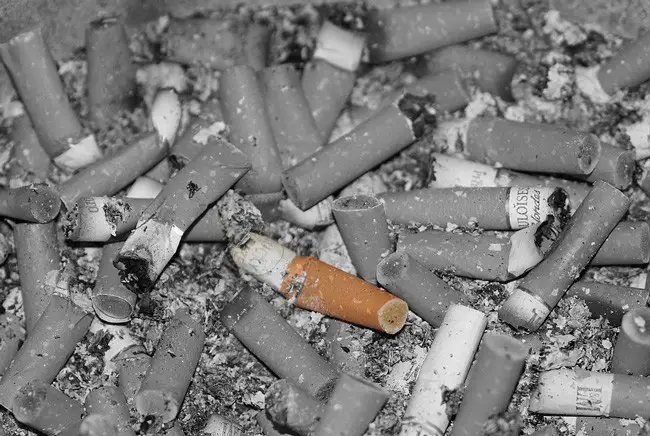
For the second week in a row, Florida Supreme Court justices have ruled against the tobacco industry’s attempts to fend off costly lawsuits about illnesses and deaths linked to smoking.
Justices, in a 5-2 ruling Thursday, rejected R.J. Reynolds Tobacco Co.’s arguments in a Broward County case stemming from the 2002 death of George Ciccone, who started smoking as a child.
The ruling could affect other tobacco cases throughout the state that are part of a collection of lawsuits known as “Engle progeny” cases. Those lawsuits are an outgrowth of a 2006 Florida Supreme Court decision that established crucial findings about the dangers of smoking and misrepresentation by cigarette makers.
The Supreme Court last week ruled against R.J. Reynolds on another legal issue that could expose cigarette makers to more punitive damages in Engle progeny cases.
Thursday’s ruling, which drew a sharp dissent from justices Ricky Polston and Charles Canady, dealt with a dispute about how courts should determine when smoking-related diseases “manifested.” As in the Ciccone lawsuit, that can be a critical question because the 2006 Supreme Court decision limited the class of smokers eligible to take advantage of the Engle case findings. The class is limited to smokers whose diseases manifested by Nov. 21, 1996 — what the Supreme Court labeled Thursday as a “cut-off date.”
At least part of the issue in the Ciccone case was that he was not diagnosed with smoking-related peripheral vascular disease until after the 1996 cut-off date.
R.J. Reynolds argued that Ciccone was not eligible to be part of the Engle class, but the Supreme Court upheld a decision by the 4th District Court of Appeal and said manifestation involves when smokers started suffering from symptoms of tobacco-related diseases — not when they were formally diagnosed. A lower court found that applied to Ciccone.
“For the reasons explained in this opinion, we hold that ‘manifestation’ for purposes of establishing membership in the Engle class is defined as the point at which the plaintiff began suffering from or experiencing symptoms of a tobacco-related disease or medical condition,” said Thursday’s majority opinion, written by Justice Barbara Pariente and joined by Chief Justice Jorge Labarga and justices R. Fred Lewis, Peggy Quince and James E.C. “Under the definition we adopt, the plaintiff does not need to have been formally diagnosed or know that the symptoms were tobacco-related prior to the ‘cut-off date’ for class membership.”
But Polston, writing in a dissent joined by Canady, said the majority’s ruling on the manifestation issue was contrary to legal precedent from cases that involve what are known as “creeping” diseases.
“Its policy views aside, the majority is simply wrong on the law because, in the creeping disease context, if a plaintiff does not know (or should not reasonably know) of the link between the product and the injury, the cause of action simply does not exist,” Polston wrote.
The lawsuit was filed against R.J Reynolds by Pamela Ciccone, the widow of George Ciccone. A jury sided with Pamela Ciccone and approved an award that called for the tobacco company to pay about $1 million in damages, according to Thursday’s ruling.
In a 2014 court filing in another case, R.J. Reynolds said more than 8,000 Engle progeny cases had been filed, with more than 4,000 pending at the time in state and federal courts.
–Jim Saunders, News Service of Florida





























Dave says
By now people should know you smoke expect cancer later in life.
Sherry says
Let’s all actually “read” the details of these articles shall we. . . this case was about a man who died from smoking in 2002, but whose symptoms dated back prior to Nov. of 1996. He was addicted to nicotine from childhood. He suffered a very long, slow death, and his widow only received the same monetary judgement as those who were burned from spilled coffee.
Of course those who start smoking NOW. . . with hazard labels on cigarette packs, and the quite common knowledge that tobacco kills. . . should certainly know better than to indulge.